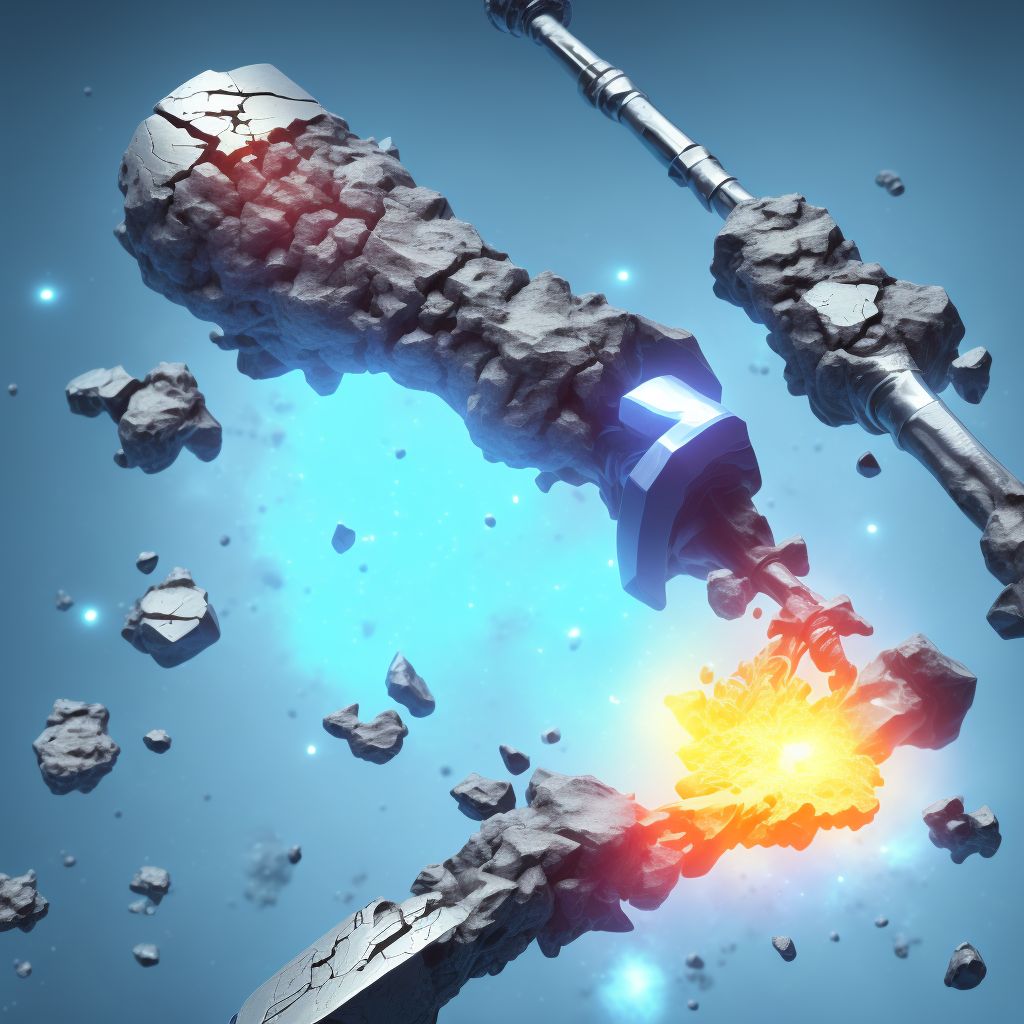
Displaced transverse fracture of shaft of unspecified tibia, subsequent encounter for closed fracture with malunion Save
ICD-10 code: S82.223P
Disease category: S82.223: Displaced transverse fracture of shaft of unspecified tibia
Displaced Transverse Fracture of Shaft of Unspecified Tibia: Understanding the Condition
A displaced transverse fracture of the shaft of an unspecified tibia refers to a specific type of bone break that occurs in the lower leg. This condition requires medical attention, and subsequent encounters may be necessary to address complications that arise, such as closed fracture with malunion. In this article, we will explore the key aspects of this condition without discussing treatment options.
- Fracture Description: A displaced transverse fracture of the shaft of an unspecified tibia refers to a complete break in the tibia bone, specifically in the long, middle portion of the leg bone. The term "displaced" indicates that the fractured bone ends have moved out of their normal alignment.
- Clinical Presentation: Patients with this type of fracture may experience pain, swelling, bruising, and difficulty bearing weight on the affected leg. They may also notice deformity or a visible abnormality in the leg, depending on the severity of the fracture and subsequent malunion.
- Diagnostic Procedures: To diagnose a displaced transverse fracture of the shaft of an unspecified tibia, medical professionals may conduct a physical examination, review the patient's medical history, and order imaging tests such as X-rays or CT scans. These tests help determine the severity of the fracture and any associated malunion.
- Complications: If the initial fracture is not treated appropriately or if complications arise during the healing process, malunion can occur. Malunion refers to the improper healing of the fractured bone, leading to misalignment or deformity. Subsequent encounters may be required to address this complication.
- Importance of Medical Attention: Seeking medical care for a displaced transverse fracture of the shaft of an unspecified tibia is crucial. Prompt diagnosis and appropriate treatment can facilitate proper healing and reduce the risk of long-term complications, such as chronic pain, limited mobility, or functional impairments.
It's important to note that the information provided here is for informational purposes only and should not replace professional medical advice. If you suspect a displaced transverse fracture of the shaft of your tibia or any other medical condition, please consult a qualified healthcare provider for an accurate diagnosis and appropriate treatment options.
Remember, early detection and proper management are key to ensuring the best possible outcome for individuals with this condition.
Treatment of Displaced transverse fracture of shaft of unspecified tibia, subsequent encounter for closed fracture with malunion:
Treatment Options for Displaced Transverse Fracture of Shaft of Unspecified Tibia with Malunion
When it comes to a displaced transverse fracture of the shaft of the unspecified tibia with malunion, there are several treatment options available. The choice of treatment depends on various factors, including the severity of the fracture, the patient's age, overall health, and the exte...
To see full information about treatment please Sign up or Log in